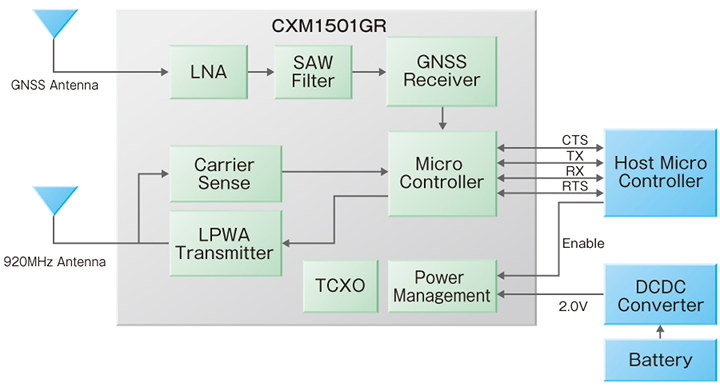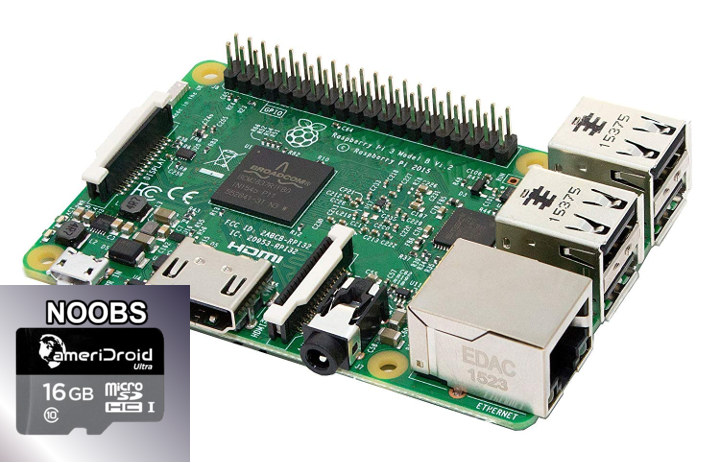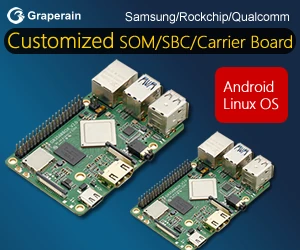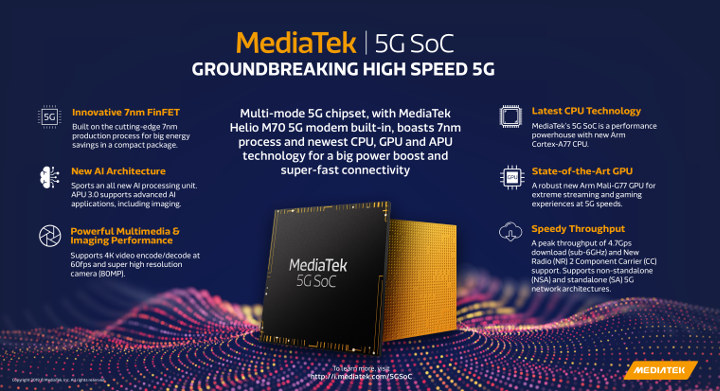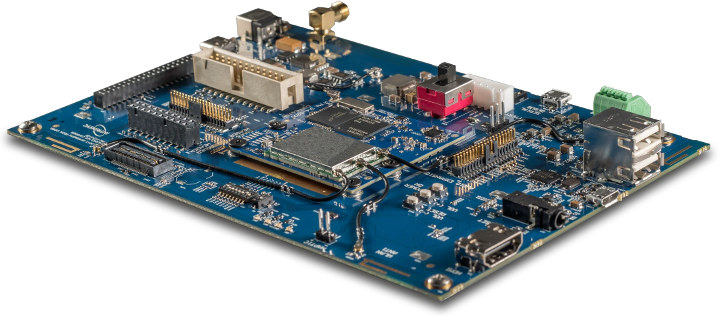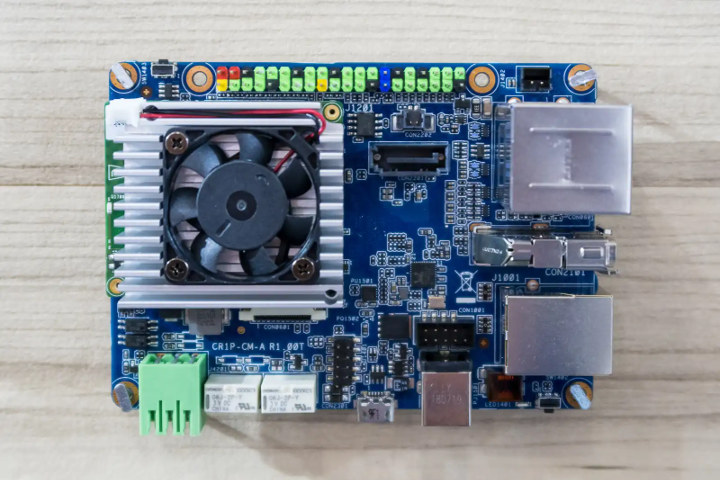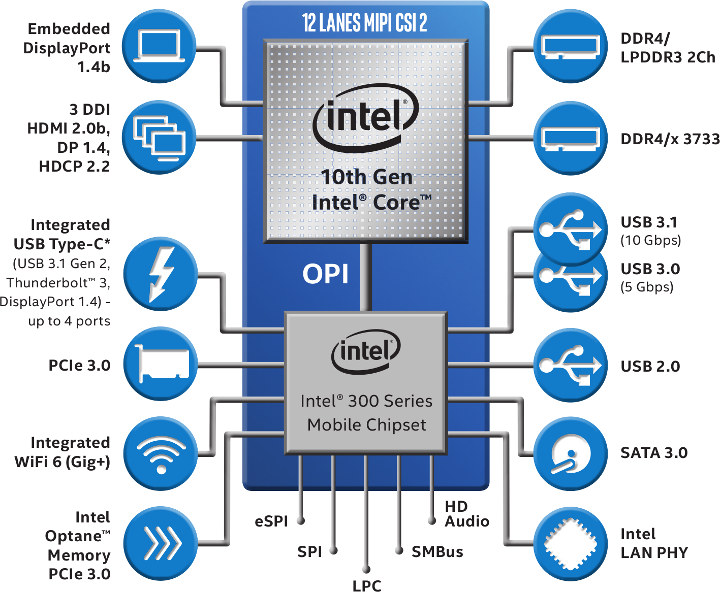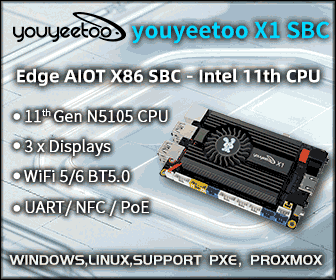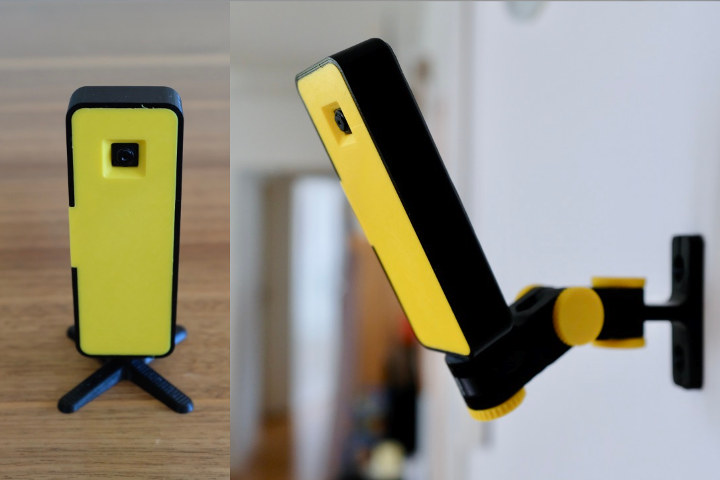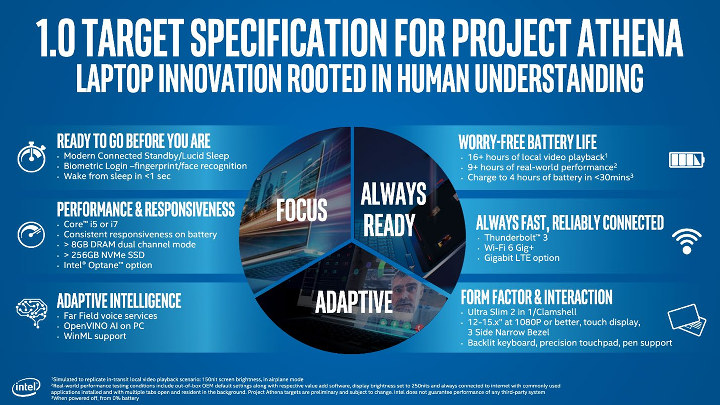While there are many LPWAN (Low Power Wide Area Network) standards, three appear to dominate the news namely LoRaWAN, SigFox, and 3GPP NB-IoT/eMTC. They all offer long range and up to 10-year of battery life enabled by the use of low bitrate which is fast enough to send sensor data. We can now add another LWPAN standard to the list, as Sony has developed ELTRES wireless communication standard suitable for IoT networks, and announced their CXM1501GR ELTRES module with a range of over 100km, even while traveling at 100km/h. Key features and specifications: ELTRES Connectivity Antenna radiated power – 20mW Communication direction – Uplink only Frequency – 923.6 MHz to 928.0 MHz (23-channel frequency hopping) Main modulation system – π/2 Shift BPSK Sub-modulation system – Linear chirp modulation Transmission system – Four repeated transmissions of 0.4 sec or shorter packets Reduction of interference with other systems – CSMA (Carrier Sense […]
Raspberry Pi 3 Model B and Rock64 1GB SBCs Promotions
Ameridroid has some promotions for two of the most popular single board computers on the market. The Raspberry Pi 3 Model B (not B+) is now offered for $33.95, or $32.95 with CNXSUPPORTER1 coupon, with a free 16GB class 10 micro SD card pre-loaded with NOOBS. The company also discounted Rock64 board (1GB RAM model), with the same form factor as Raspberry Pi 3 Model B, but a faster Rockchip RK3328 processor, and high-speed interfaces like USB 3.0 and Gigabit Ethernet, making it one of the best alternatives to Raspberry Pi 3 board. You can now get it for $24.95, a discount of $5 compared to the normal price on Ameridroid. $24.95 also happens to be the price the board is sold on Pine64, but you may save on shipping depending on where you live. You’ll also be able to save a bit more by using one of the following […]
MediaTek 5G SoC to Feature Arm Cortex-A77 Processor & Mali-G77 GPU
It did not take long this time. Just a couple of days after Arm announced their latest Cortex-A77 CPU and Mali-G77 GPU IP blocks, MediaTek unveiled an upcoming 5G processor based on their Helio M70 modem, an unspecified number of Arm Cortex-A77 cores, a Mali-G77 GPU, all manufactured using a 7nm FinFET process. The company did not bother finding a name for the processor nor provided details specifications before the announcement, but here’s what we know about the first MediaTek 5G SoC: CPU- Arm Cortex-A77 cores GPU- Arm Mali-G77 NPU – APU 3.0 with support for advanced AI applications including imaging Video – 4K60 video encode and decode Camera – 80MP ISP Cellular Connectivity – Helio M70 5G modem with peak 4.7 Gbps download using sub-6GHz bands, support for standalone (SA) and non-standalone (NSA) 5G networks Process – TSMC’s 7nm FinFET Samples will be available in Q4 2019, and commercial […]
Intrinsyc Launches Open-Q 212A SoM & Qualcomm Home Hub 300 Development Kit
Intrinsyc has just announced the availability of the Open-Q 212A system-on-module and Home Hub Development Kit based on Qualcomm Home Hub 300 Platform powered by the Qualcomm APQ8009 SoC better known as Snapdragon 212. The module supports multi-mic beamforming, audio canceling, HiFi audio, as well as WiFi 5 and Bluetooth connectivity, which makes it suitable for integration into cost-sensitive home hub, home automation, and smart audio devices featuring voice control, AI, and wireless connectivity. Open-Q 212A system-on- module Open-Q 212A SoM, which should not be confused with the company’s Open-Q 212 SBC released two years ago, features for the following specifications: SoC – Qualcomm Snapdragon 212 processor (APQ8009) quad-core Arm Cortex-A7 @ 1.267GHz with Adreno 304 GPU, Qualcomm QDSP6 DSP System Memory – 1GB LPDDR3 RAM Storage – 4GB eMMC Flash storage Video – 720p@30fps playback; up to 720p playback with H.264 (AVC) and H.265 (HEVC); up to 720p H.264 […]
ASUS Tinker Edge T & CR1S-CM-A SBC to Feature Google Coral Edge TPU & NXP i.MX 8M Processor
A few months ago, Google introduced its Coral development board and USB accelerator powered by their Edge TPU delivering up to 4 TOPS and optimized for Tensorflow Lite. ASUS and Google have now partnered to bring more solutions powered by Coral Edge TPU namely ASUS Tinker Edge T board for makers and hobbyists, CR1S-CM-A SBC for industrial projects, and even a full computer fitted with a Google Edge TPU PCIe card. ASUS Tinker Edge T ASUS Tinker Edge T preliminary specifications: SoC – NXP i.MX 8M quad-core Arm Cortex-A53 processor with Arm Cortex-M4F real-time core, GC7000 Lite 3D GPU ML accelerator – Google Edge TPU co-processor System Memory – 1GB LPDDR4 RAM Storage – 8 GB eMMC flash Connectivity – Gigabit Ethernet port, Wi-Fi 2×2 MIMO (802.11b/g/n/ac 2.4/5GHz), and Bluetooth 4.1 Video Output – MIPI DSI connector, and HDMI output Camera I/F – 2x MIPI CSI 2 interfaces for stereoscopic […]
9W Intel Ice Lake Y-Series Processors Coming with Gen11 Graphics, 10nm Process
Intel has provided a few more details about their upcoming Intel Ice Lake Y-Series processor that will succeed their Amber Lake Y-Series family comprised of Core m, and Core i5/i7 processors with 5W to 7W TDP. Ice Lake Y-Series processor will come with the latest Intel Gen11 graphics with up to 64 EU (Execution Units), have a higher 9W TDP, configurable up to 12 Watts, and be manufactured with Intel’s 10nm process. Highlights of Intel Ice Lake Y-Series processors: CPU – 10nm+ quad-core processor, 14nm Platform Controller Hub (PCH ) GPU – Gen 11 Intel Graphics Engine, up to 64 EUs; Open GL 4.5, DirectX 12, and OpenCL 2.2 API support AI – Intel GNA (Gaussian Network Accelerator) Memory I/F – LPDDR4/x-3733 Camera – IPU4p: 16MP, 4K30, 4x cameras, RGB+IR camera Video Output eDP 1.4b up to 4K120/5K60 (10-bit) resolution DisplayPort 1.4 up to 4K120/5K60 (10-bit) resolution HDMI 2.0b up […]
HKCam is a Raspberry Pi Zero W based DIY HomeKit IP Camera
HKCam is an IP camera based on Raspberry Pi Zero W board and compatible with any HomeKit apps. The developer, Matthias Hochgatterer, did not make the hardware himself, and instead purchased a Raspberry Pi Zero W + camera kit sold for around $30 on Aliexpress. His main work was to design a 3D printed case and write the software running in the camera, as well as his own Home 3 smart home automation app for iOS compatible with HomeKit. The only hardware needed is the Raspberry Pi Zero W with a power supply, the official Raspberry Pi camera module with is flat cable, and a microSD card, so you could also get those locally instead of purchasing them from Aliexpress. The firmware is based on Raspbian, FFmpeg to access the camera stream, as well as hc, a lightweight framework to develop HomeKit accessories in Go. You’ll find the documentation, source […]
Project Athena Specification 1.0 – Fast Response Times and Long Battery Life
Project Athena innovation program aims to provide a set of guidelines for Windows or Chrome OS always-on always-connected laptop powered by Intel processor. At the time of the first announcement at CES 2019 few details were provided, but Intel has now released Project Athena 1.0 target specification which gives clearer details of what such laptops will have to offer. Intel also introduced new “key experience indicators” (KEI) aligned with real-world conditions in order to provide to best experience to end-users. Project Athena 1.0 target specification defines six key areas of innovation: Instant Action – Modern Connected Standby and Lucid Sleep (feature of Chrome OS) features implement fast wake with a simple lid-lift, push of a button or quick fingerprint recognition. System wake from sleep must occur in less than 1 second Performance and Responsiveness – Systems based on Intel Core i5 or i7 processors with Intel Dynamic Tuning Technology, a […]


